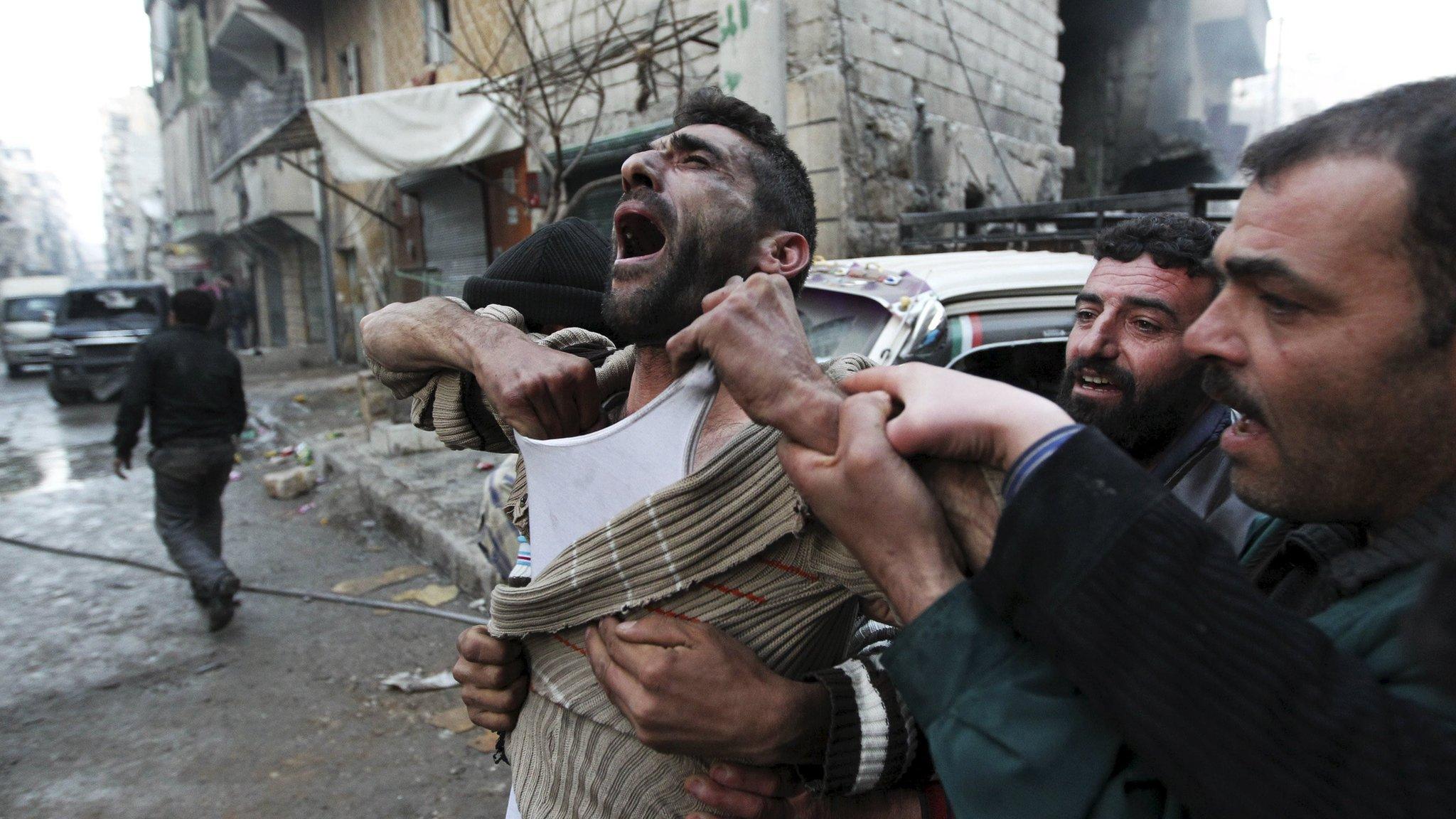Syrian conflict: Helping children through the horror of bomb blasts
- Published
Dr Murhaf: 'We need to know more about surgery for war zone children'
The effect of a bomb attack on a child can be devastating, both physically and psychologically. Now a new guide for medical staff on how to treat children injured by bomb blasts is being used to save the lives, and limbs, of young people in war zones.
"You can never truly understand how painful something like that is until it actually happens," Dave Henson tells the BBC's Victoria Derbyshire programme.
He was blown up by an improvised explosive device (IED) in Afghanistan in 2011, and remembers the experience vividly.
"There was a lot of fear. When you're lying there on the ground and a certain amount of blood has been chucked out of your body - the cold that sets in is quite terrifying. That sort of thing you can never prepare for."
Mr Henson served as a captain in the British army.
He struggles to comprehend the effect a bomb blast would have on a child - especially those too young to understand what is going on.
"I just can't imagine the fear that is instilled in a child at that moment," he says.
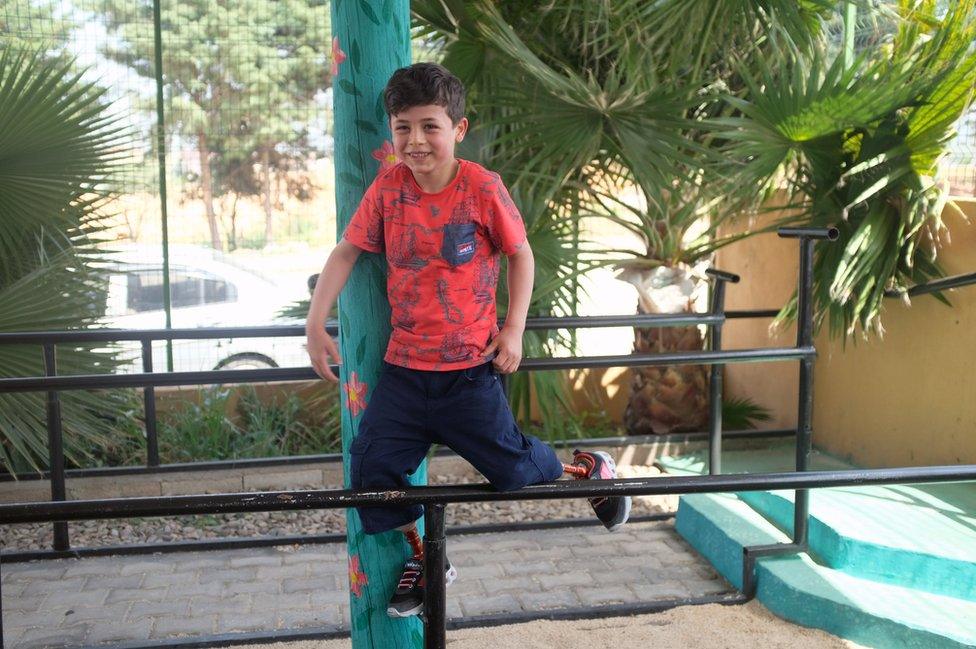
"Saed" had both legs amputated after a blast struck his family's car while they were fleeing an aerial bombardment in Syria
Bombardments continue to cause both personal and structural devastation in countries such as Afghanistan and Syria.
Until now, most training and techniques available to war-zone medical staff have focused on treating adults - leaving them struggling to provide children with the special type of care they need.
This is despite the United Nations estimating that there have been more than 20,000 child deaths since the start of the Syrian civil war in 2011 from all causes - including blasts.
Dr Murhaf - one of the few surgeons left working in Idlib province in Syria - describes living in that region as "chaos", and akin to "hell".
It is the last rebel-held province of the country opposed to President Assad, and is currently being bombarded by Russian and Syrian government forces. There are also constant ground battles.
"I have a little daughter, and when I see every child I think of her," he says.
"We need to learn more and more about surgery for children."
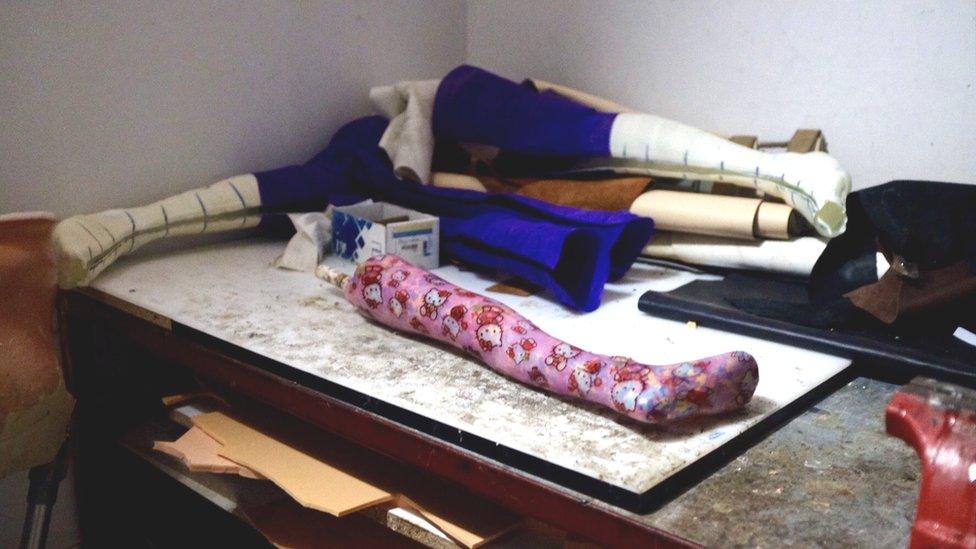
Many children given prosthetic limbs require surgery every year or so to ensure they are not in pain
Now that help may be coming.
A manual has been developed to help medics, including Dr Murhaf, tailor their care for children.
It is being taught just over the border in Reyhanli, Turkey, within a specialist centre at which 7,000 Syrian victims of bombs, mines, and shrapnel have been treated since the outbreak of the war - including many children.
One of them is seven-year-old "Saed", whose name we have changed.
When he was just 18 months old he was in a car with his family, trying to flee aerial bombardment in Aleppo.
He was sitting on his mum's lap when an air strike landed so close to their car that shrapnel pierced the whole vehicle.
He needed both his legs amputated. His sister was killed.
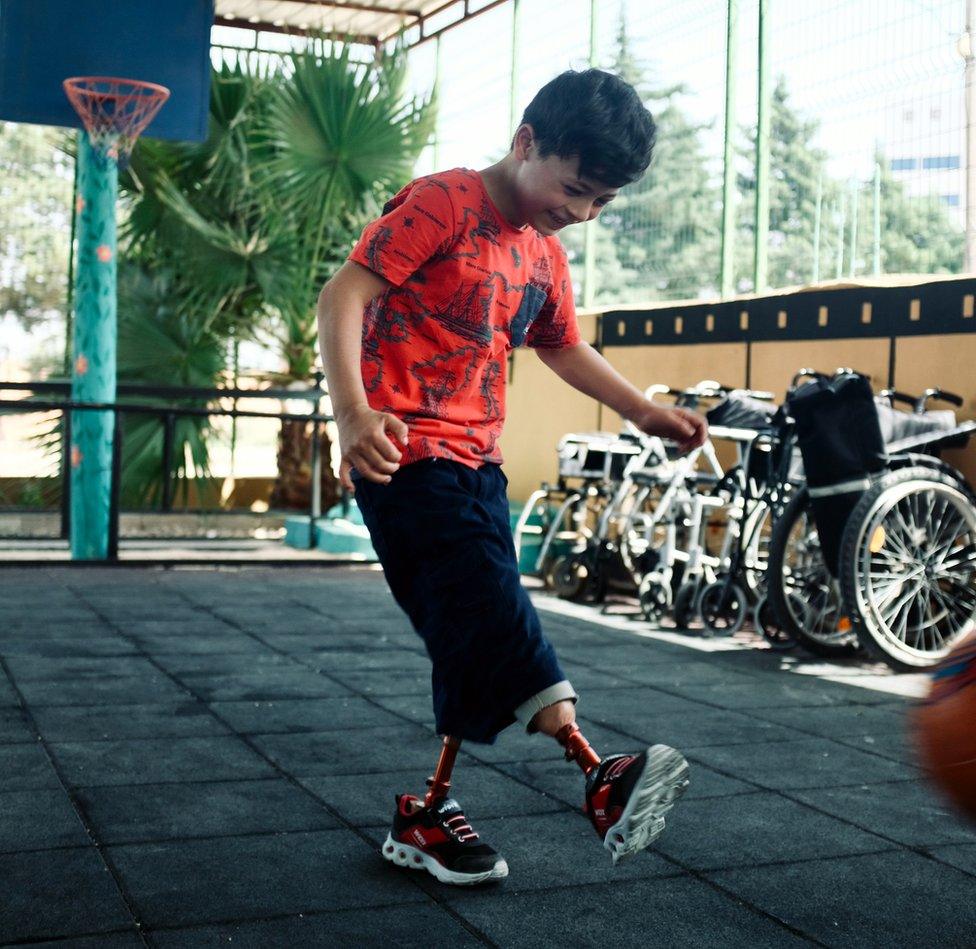
Saed's rehabilitation needs are different to those of an adult
Saed now wears prosthetics, and is currently undergoing an adjustment for a newly constructed socket for his limb, the clinic's medical director, Dr Malik, explains.
"He needs to have an adjustment to the limb every year or one-and-a-half years, because the bone will keep growing," he says.
"They will cut open the amputation - adjust the bone length and then sew it out again."
These continued operations are crucial to Saed's rehabilitation - but without specialist understanding of the needs of children, it is something that could be easily missed.
It is why war medics requested the manual and why they believe it could be crucial.
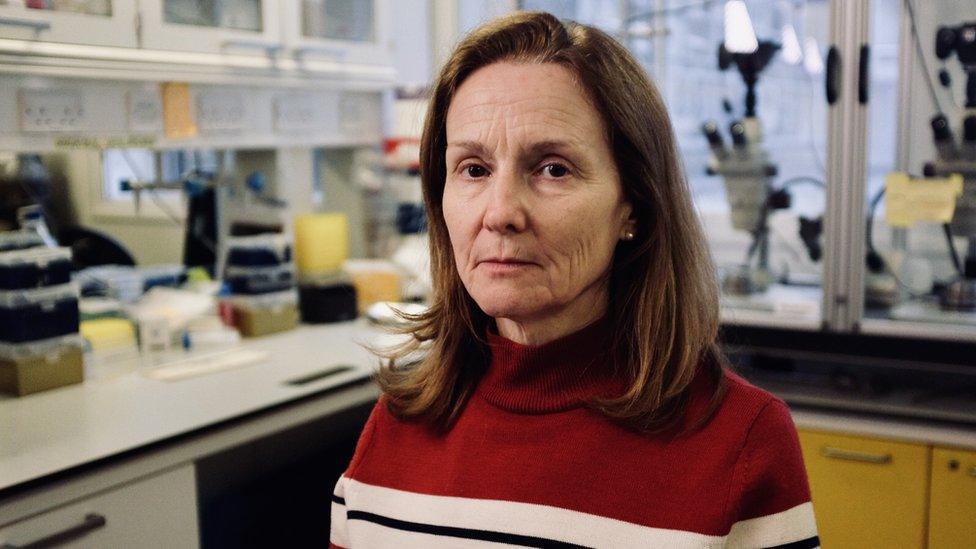
Dr Emily Meyhew says even experienced war-zone medics can "fall apart" when confronted with a child with blast injuries
The guide has been designed and written by charity Save the Children and scientists at Imperial College London in the UK - including Dr Emily Meyhew.
She explains how "people with incredible experience in treating and saving lives of blast casualties can fall apart when confronted with a blast-injured child."
"So we want to be able to help them get across that first moment of panic, the first moment of fear, the first moment of worry," she says.
'My family is proud'
"Abdel" - not his real name - was just nine when he lost a leg in an air strike in Syria.
He remembers hearing a very loud sound, and that for three or four minutes he "didn't feel anything at all".
When he opened his eyes, he saw others around him who had lost both arms and both legs. Others were dead.
His leg had to be amputated.
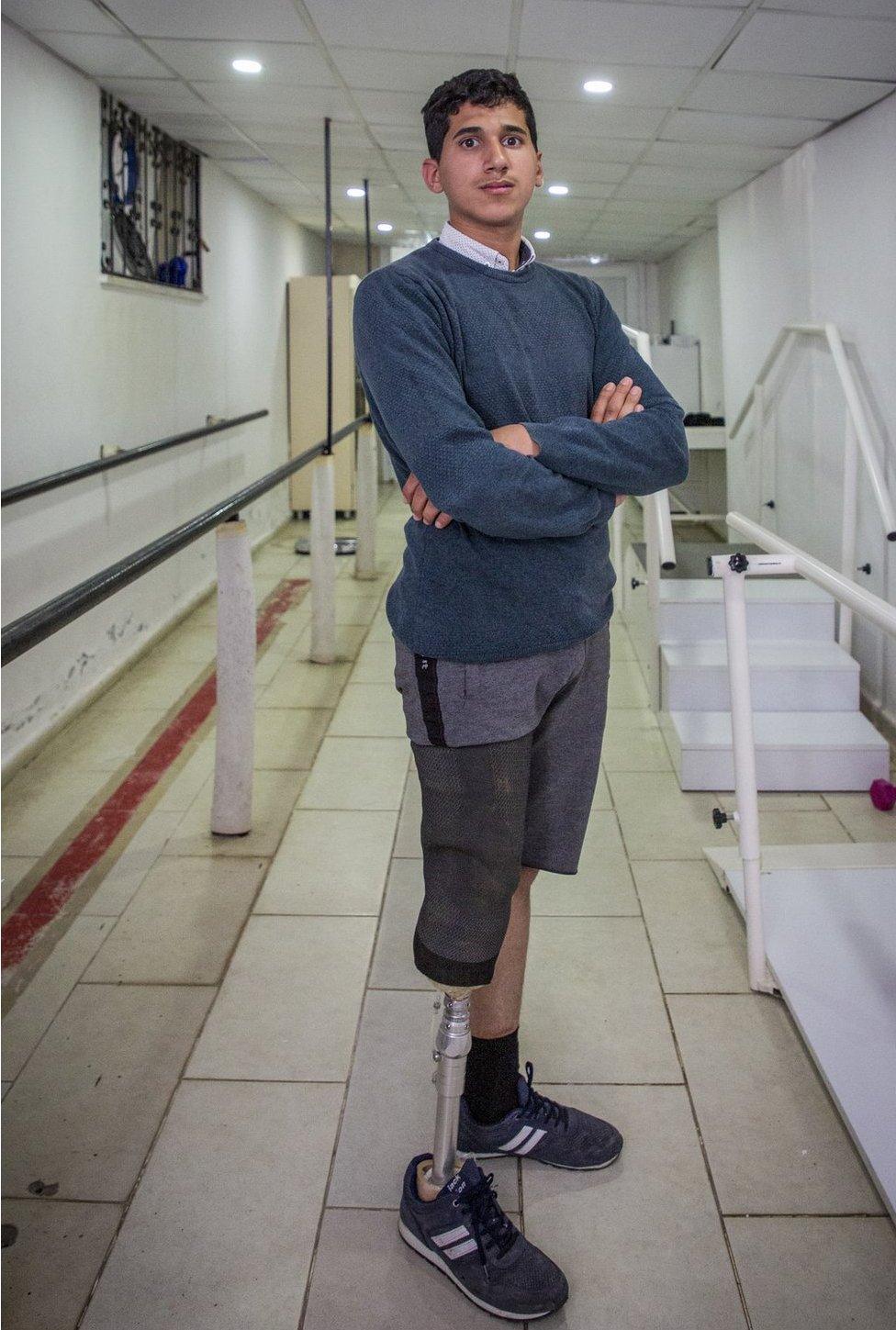
"Abdel" was originally fearful of going outside following his injury
Now he wears his prosthetic proudly outside, but for a long time the incident left deep scars - and left him afraid to go out.
"I initially didn't adapt well to this situation," he says, "[but now] my family is very proud."
It is hoped the guide will play a role in the recovery and development of children like Abdel, both psychologically and physically.
Those behind it are already looking to roll it out to other war zones in future, including Afghanistan.
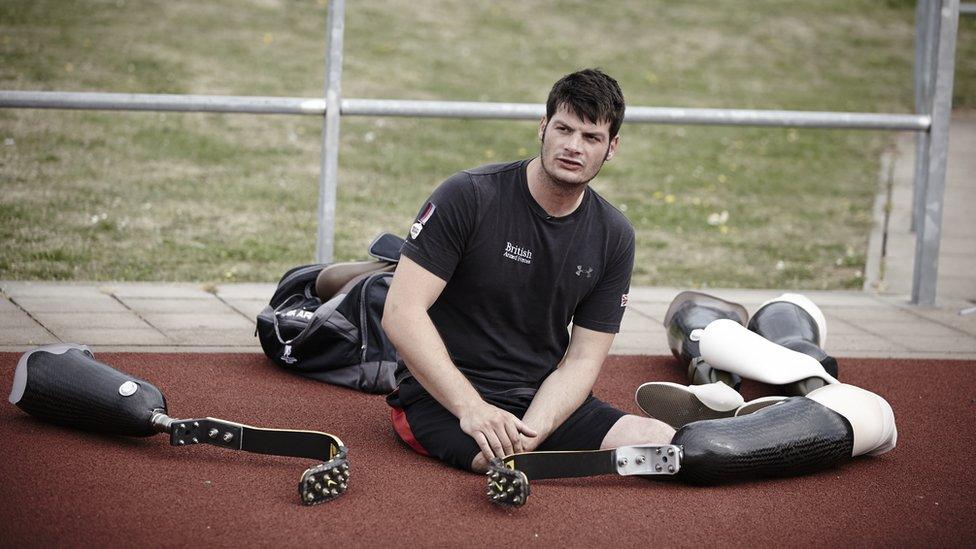
Dave Henson remembers the "extraordinary amount of pain" that follows a blast injury
For Dave Henson, who has since gone on to compete in the Paralympics and is involved in research on improving prosthetics, the more knowledge medics have, the better.
Having been in the Army in Afghanistan, his military training had prepared him for the possibility of being blown up. But he says that for a child injured by a bomb, it would be much worse.
"[As a child] you have no understanding of what has happened, probably no understanding of what a blast injury is.
"And yet suddenly they find themselves on the ground with blood everywhere, bits missing and just an extraordinary amount of pain.
"We know from our experience that you can have rehab and you can recover from the injuries themselves - but it's the fear of the unknown that comes with it that I hate thinking about so much."

Follow the BBC's Victoria Derbyshire programme on Facebook, external and Twitter, external - and see more of our stories here.
- Published2 May 2023
